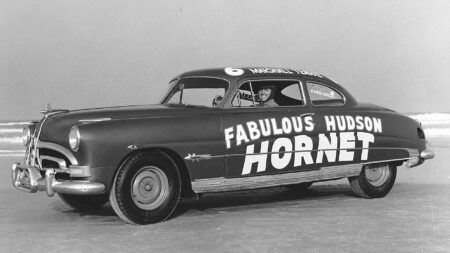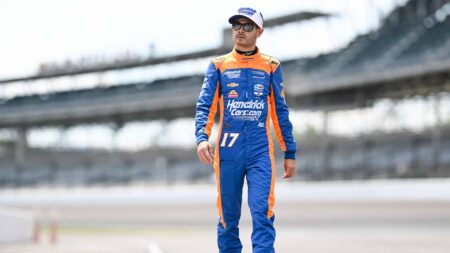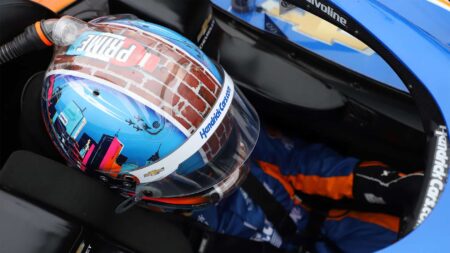
The real-life Hudson Hornet: story of a NASCAR icon
The massively successful Cars Disney film made Doc Hudson popular with fans young and old – James Elson tells the story behind the Hudson Hornet NASCAR it was based on
A pair of particularly explosive multi-car accidents in last Sunday’s NASCAR race at Pocono, eastern Pennsylvania underlined the need for safety improvements at the 2.5-mile superspeedway. Kurt Busch and Elliott Sadler emerged shaken but unhurt from big accidents late in the race, yet the nature of the two separate but related incidents made it clear that some planned, and some additional, changes must be made to the 40-year-old track.

Pocono is about two hours drive from New York City and is a tri-oval, opened in 1969. It was designed originally for Indycars with three distinctly different corners and three long straightaways. The track used to make for great Indycar races but it got rougher and rougher, and after a series of wreck-filled races Indycars were no longer seen at Pocono after 1988.
NASCAR arrived at Pocono in 1974 and a second 500-mile race was added in ’82. Pocono’s two Sprint Cup races are eight weeks apart in June and late July/early August, and the place continues to draw pretty good crowds. Last weekend’s crowd was a little bigger than for the June race, and over the years track founder Dr Joe Mattioli has done very well by Pocono’s two NASCAR weekends.
Earlier this year, Mattioli committed to installing two new shock-absorbing SAFER barriers between Pocono’s first and second, and second and third turns. The improvements are scheduled to take place over the next few months, but after last weekend’s race there were calls to pave over the grassy infield sections between turns two and three in particular.

Sadler’s engine is towed back to the pits
NASCAR champion Jimmie Johnson, who did an uncharacteristically bad job of bump-drafting, triggered Busch and Sadler’s accidents. Instead of nudging Busch forward, Johnson hit him hard in the tail, causing Busch to slide out of control and spin into the wall. Busch’s car slid down into the infield where it got up in the air, bounding over the grass and across an infield access road, tearing off a front wheel as it rolled along.
As the rest of the field reacted Sadler was hit in the tail and ended up shooting headfirst across the grass and into an infield guardrail backed by an earth bank. The impact tore the engine and most of the front end from Sadler’s car. It was an extremely hard hit but Sadler scrambled out of the cockpit under his own power before laying on the track for a few seconds to gather his breath and senses. Barely 10 minutes later he emerged from the medical centre to address the media.

“I’m a little sore through my chest and stomach,” said Sadler (above). “But that’s from where the seat belts did their job and grabbed me and kept me in the car. So I’m thankful for that and all the safety stuff in the car and the Hans device, too.”
In recent years NASCAR has learned a lot about safety from Formula 1 and Indycars. Many NASCAR drivers were reluctant to adopt the Hans device when it first appeared and before appreciating it’s value they had to see it proven. Other big improvements have happened in NASCAR’s seats, which were archaic through Dale Earnhardt’s fatal crash at Daytona in 2001. But since those dark days everyone in the sport has steadily moved to F1 and Indycar-like crushable carbon seats.
Yet there’s always some way to make both the cars and tracks better, and we commend Dr Mattioli for making the commitment to bring his track up in the Pocono mountains into the 21st century.

The massively successful Cars Disney film made Doc Hudson popular with fans young and old – James Elson tells the story behind the Hudson Hornet NASCAR it was based on

NASCAR star Kyle Larson is attempting 'The Double' this Sunday, driving the Indianapolis 500 and Coca-Cola 600 on the same day – but several factors could stand in his way

'The Double' is a challenge like no other in motor sport – we look at the brave racers who've taken on the Indianapolis 500 and Coca-Cola 600 on the same day

NASCAR has aimed big with its new Drive to Survive Netflix imitator Full Speed: can the docudrama match its lofty ambitions?